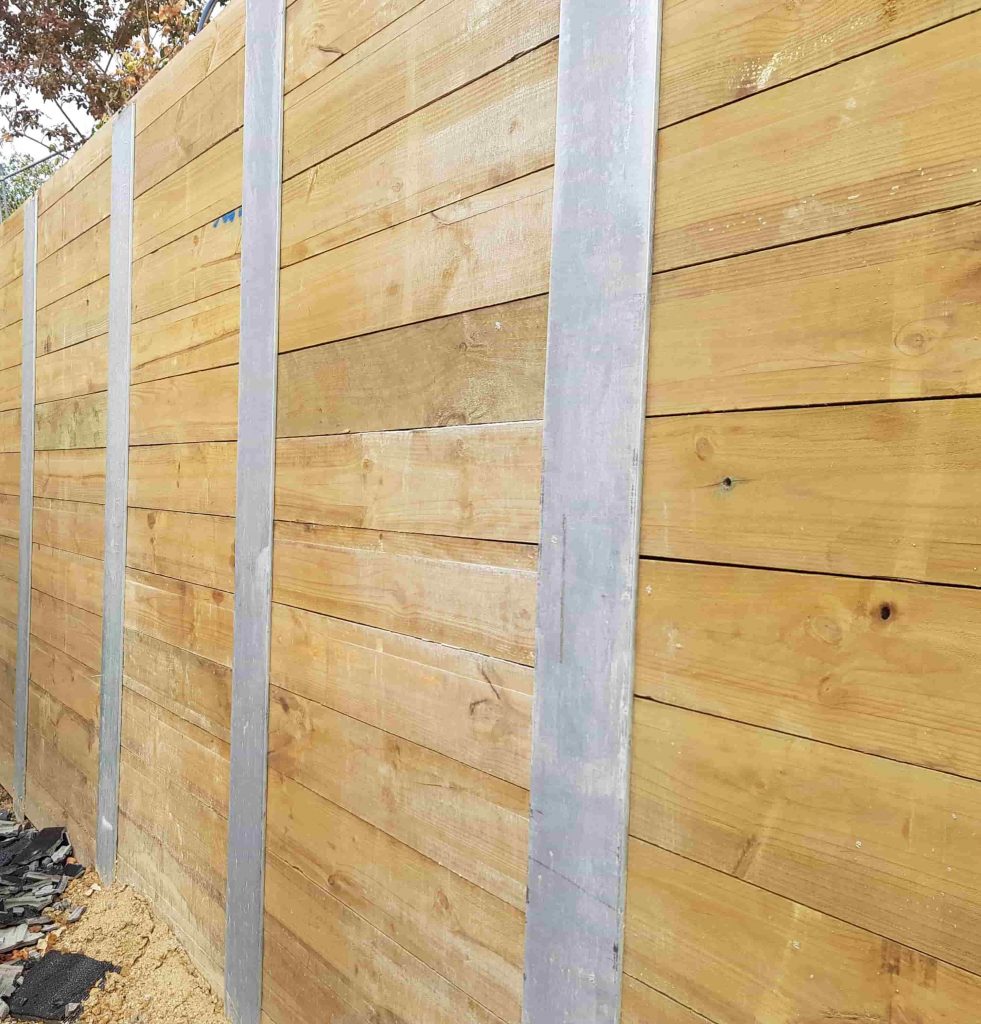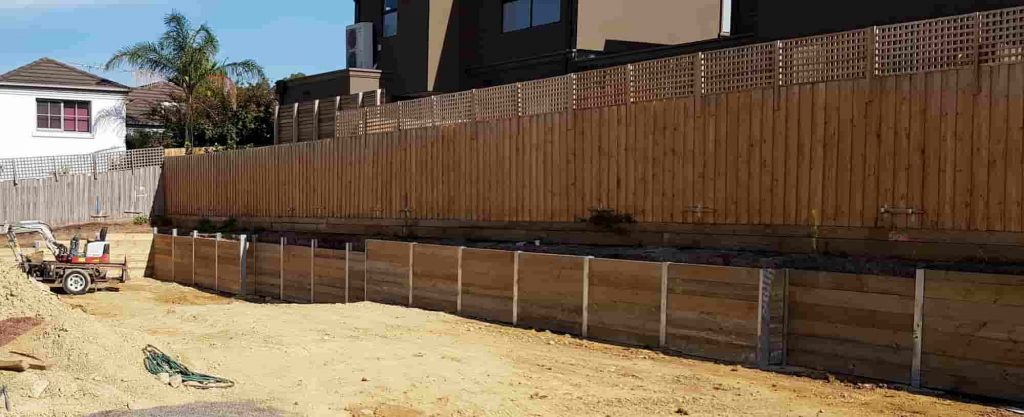Introduction
Transforming outside areas is not practically looks; it has to do with performance and sustainability. Among the most reliable methods to attain this is through the installation of retaining walls. Maintaining walls serve a crucial function in handling soil disintegration, producing flat surface areas for landscaping, and improving the overall appeal of your garden or yard. But attaining a perfect retaining wall requires proficiency, ability, and the best materials. This short article will look into the world of skilled retaining wall installers and how they can http://messiahfencecompanyboqs813.almoheet-travel.com/exploring-the-latest-tools-and-technologies-used-by-modern-retaining-wall-builders transform your outdoor space using numerous materials like timber sleeper, concrete sleeper, and H beam
Understanding Retaining Walls: The Basics
What is a Retaining Wall?
A retaining wall is a structure designed to keep back soil and avoid disintegration. They are frequently utilized in landscaping to produce balconies or leveled areas in sloped yards.
Why Are Keeping Walls Important?
Retaining walls are important for a number of reasons:
- Erosion Control: They help prevent soil from moving down slopes. Landscaping Opportunities: Develop usable flat locations on sloped land. Aesthetic Appeal: They can improve the appearance of your garden.
Materials Utilized in Retaining Wall Construction
Timber Sleeper
Timber sleepers are a popular choice for maintaining walls due to their natural look and ease of use.
Advantages of Wood Sleepers
Natural Look: They blend perfectly with outside environments. Cost-Effective: Normally more cost effective than concrete options. Versatile Style: Easy to cut and form to fit any project.Disadvantages of Wood Sleepers
Durability Issues: Vulnerable to rot and pest damage. Maintenance Needed: Routine treatment needed to prolong lifespan.Concrete Sleeper
Concrete sleepers have become increasingly popular due to their strength and durability.
Advantages of Concrete Sleepers
Longevity: Resistant to weathering, insects, and rot. Low Maintenance: Minimal upkeep required compared to timber. Variety of Designs: Available in numerous textures and colors.Disadvantages of Concrete Sleepers
Higher Initial Costs: More pricey than timber options. Heavy Weight: Requires professional installation due to weight.H Beam
H beams provide structural assistance for larger keeping walls that require extra stability.
Advantages of H Beams
Strength and Stability: Suitable for high-load applications. Durable Product: Resistant to deterioration when properly coated. Versatile Usage Cases: Appropriate for different landscaping designs.Disadvantages of H Beams
Cost Consideration: More pricey than standard materials. Installation Intricacy: Requires experienced professionals for proper setup.Choosing the Right Installer
What Makes a Professional Installer?
When it comes to transforming outside spaces with skilled retaining wall installers, professionalism matters profoundly. A professional installer must have:
- Extensive experience in various products consisting of timber sleeper, concrete sleeper, and H beam. A robust portfolio showcasing past projects. Positive customer reviews reflecting dependability and quality work.
Questions to Ask Prospective Installers
- What products do you advise for my particular project? Can you supply references from previous clients? Do you have liability insurance?
The Setup Process: Action by Step
Initial Consultation
Before any work begins, an initial assessment with the installer is crucial to understand your requirements, budget, and vision.
Site Assessment
The installer will assess your residential or commercial property's topography, drainage systems, and possible difficulties throughout installation.
Designing the Wall
Collaborating with an expert permits you to pick the very best design fit for your landscape while guaranteeing structural integrity.

Preparing the Site
This involves clearing the area where the wall will be put, which might include getting rid of vegetation or debris.
Building the Wall
Finally, proficient installers will implement their knowledge in setting either lumber sleepers, concrete sleepers, or H beams according to plan specifications while making sure security requirements are met.
Maintenance Tips for Your Maintaining Wall
Regular Inspections
Check for indications of wear or damage a minimum of two times a year, particularly after heavy rain or storms.
Drainage Solutions
Proper drainage is key! Make sure that water flows far from your retaining wall to prevent saturation which can cause failure over time.
Cleaning
Keep it clean! Eliminate any particles that builds up on the top or around your wall which can trap wetness versus its surface.

FAQs About Keeping Walls
Q1: For how long does it take to install a maintaining wall?
A: The installation timeframe varies based on size and product however generally ranges from 1-5 days depending on complexity.
Q2: Can I construct my own keeping wall?
A: While it's possible for do it yourself enthusiasts who have experience, employing specialists makes sure much better results concerning security and longevity.
Q3: Just how much does it cost to install a retaining wall?
A: Costs differ extensively based upon material choices (timber sleeper vs concrete sleeper), size, place specifics; expect anywhere from $15-$50 per square foot installed professionally.
Q4: Do I need permits for developing a keeping wall?
A: Yes! A lot of local authorities need authorizations specifically if the wall goes beyond particular height limits-- speak with professionals who know regional regulations!
Q5: Will my plants be affected by a brand-new retaining wall?
A: It depends on positioning; however proper planning by professionals can decrease interruption while improving total landscape health!
Q6: How do I select in between timber sleeper and concrete sleeper?
A: Consider aesthetics versus sturdiness; if you're looking for something stunning that mixes naturally pick timber but if durability is key then lean towards concrete!
Conclusion
Transforming outdoor spaces with competent retaining wall installers is not merely about setting up structures; it's about crafting customized solutions that balance performance with visual appeal. Whether you go with timber sleeper walls that stimulate rustic beauty or strong concrete sleepers created for longevity-- understanding your options empowers you as a property owner! Seeking professional aid ensures every element of setup satisfies high standards while resolving both instant needs and future maintenance concerns successfully! So why wait? Embrace this opportunity today; turn your landscape dreams into reality by working together with skilled installers who bring innovation right into your backyard!